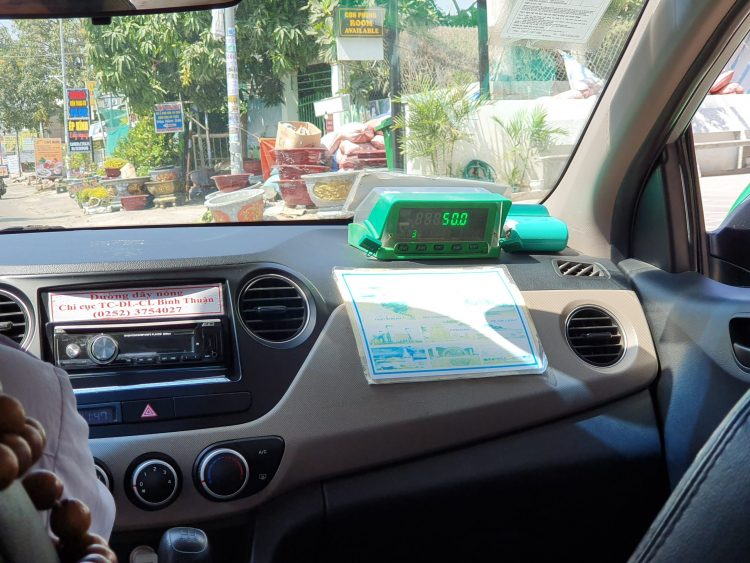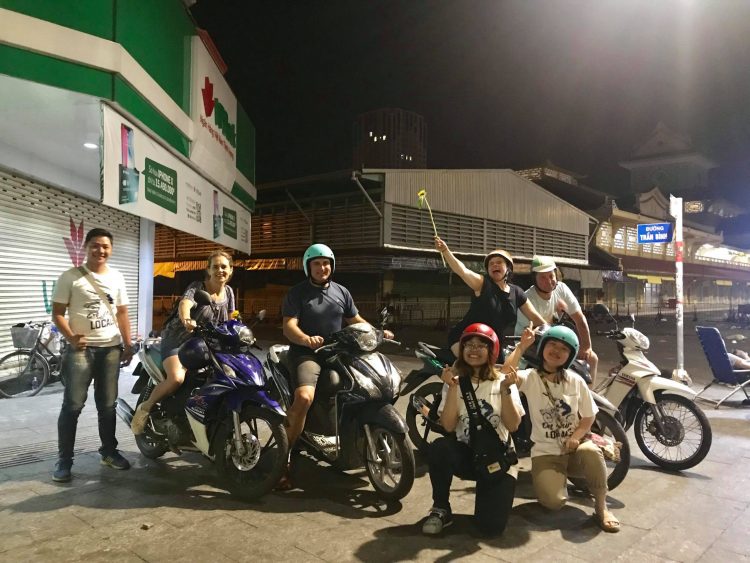Getting around Vietnam: Easy Ways to Travel in this S-shaped Country

Vietnam has long been known for its crazy traffic with millions of motorbikes traveling like a school of fish. How about becoming a part of that chaotic scene or getting around Vietnam by luxury private transportation? You are traveling to a country that has something for everyone.
You can travel throughout Vietnam from Hanoi to Ho Chi Minh City for roughly two hours by plane or slowly drink in Vietnam’s most beautiful landscapes from a passenger car. There are also buses, boats, and many other easy ways to get around Vietnam no matter your budget. You can travel around Vietnam well without spending a lot of money; if you want to do so, you will get what you pay for.
Getting around Vietnam | Mass transit options
While air travel is the most favorable option for long-distance journeys like traveling from South to North Vietnam, you can think of some alternatives which are not less interesting. Mass transit options in Vietnam vary in prices and classes, offering you an opportunity to meet local people.
Getting around Vietnam by plane

Two of the biggest airports in Vietnam are Tan Son Nhat Airport (Ho Chi Minh City) and Noi Bai Airport (Hanoi). There are 21 airports in Vietnam including 9 international airports in operations. Traveling by plane is the most time-efficient option for long-haul trips, especially when you want to cut down on time traveling between the South and the North of Vietnam. Just keep in mind that you will need a valid passport when taking internal flights.
Vietnam Airlines is Vietnam’s national carrier, covering most destinations in the country. Jetstar, VietJetAir, VASCO, BamBoo Airways offer other popular flight options. If you book early, you can take advantage of promotions from budget carriers and save up to 50% of airfares. Note that budget airlines usually charge extra for baggage fees.
» See more on A Traveler’s Guide to International Airports in Vietnam
Getting around Vietnam by train
https://www.instagram.com/p/B2_-6qtiqes/?utm_source=ig_web_copy_link
Train travel is a budget-friendly option to get around Vietnam. For short journeys, you can book directly at the train station when you arrive. It is better to book in advance if you plan for longer journeys or overnight trips. The Reunification Express that runs from Hanoi to Ho Chi Minh City was named on the list of 25 world’s most beautiful railways in 2016.
You can choose from a variety of classes and facilities offered on trains in Vietnam. There are hard seats, soft seats, hard sleepers, soft sleepers with or without air conditioners. For overnight trips, you should opt for the highest level. Trains in Vietnam leave on time, but often arrive late. As a rule of thumb, make sure to get to the train station at least half an hour before departure.
The entire north-south trip can take up to 40 hours. Rough trip times are:
- Hanoi to Vinh: 5 – 7 hours
- Vinh to Dong Hoi: 3.5 – 5 hours
- Dong Hoi to Dong Ha: 2 – 3 hours
- Dong Ha to Hue: 1 – 2 hours
- Hue to Da Nang: 3 – 4 hours
- Da Nang to Nha Trang: 10 – 12 hours
- Nha Trang to Muong Man: 4 – 7 hours
- Muong Man to Saigon: 3.5 – 4.5 hours
Check schedules and prices for different classes of train here. Trains are slower than planes, but if you have a bit of time, train travel is an ideal option.
» See more on 10 Tips for Your First Trip to Vietnam
Getting around Vietnam by bus

Local buses are fine for trips under three hours, but longer than that may cause discomfort. All main cities have bus stations, and travel by bus is popular among the locals, so be prepared for the crowds and perhaps pickpockets. It is recommended that foreign tourists take open tour buses with a limited number of passengers instead of national buses.
You can buy tickets directly at the station or buy online tickets in advance at Ve Xe Re or Baolau. If you plan to travel during Tet holiday, prior bookings are the best option to make sure you have a seat. Overnight buses usually have bunk beds, so you can sleep on them. Remember to pack an eye mask and earplugs for a good night’s sleep.
» See more on Vietnam Packing List: How to Pack Smarter
Getting around Vietnam by boat
https://www.instagram.com/p/B5G8jUSlPV8/?utm_source=ig_web_copy_link
This option suits Mekong Delta tours or Cambodia – Vietnam trips. You can travel by boat for two days from My Tho to Chau Doc on the Cambodian border. There are also private luxury river cruises around the Mekong River Delta. This is the best way to dig into the local way of life that revolves around rivers.
Day trips by boat are possible on rivers in Hoi An, Nha Trang, Danang, Hue, Ninh Binh and in Ho Chi Minh City. If you travel to Northern Vietnam, it is a good bet to experience overnight excursions in Halong Bay, one of the best UNESCO World Heritage sites in Vietnam. For boat travelers, researching the weather and climate in Vietnam beforehand is essential as most boat trips are subject to weather conditions.
Getting around Vietnam by metro (upcoming)

Hanoi Metro and Ho Chi Minh City Metro are planned to operate in 2021. Tourists can reach top attractions in the cities by metro and those who already visited Vietnam will see how different Vietnam will be in the near future. See more on Getting around the City by Ho Chi Minh City Metro.
» See more on 10 Best Bars in Ho Chi Minh City
Customized options
You can book a traditional taxi or use a car-hailing app to transfer from the airport to your hotel. If you really want to experience the local crazy traffic, try cyclo, motorbike taxi, or you can even ride yourself.
Getting around Vietnam by taxi

Taxis are extremely popular for airport transfers and short-distance trips within a city. There are many taxi brands with their population varying by provinces. The two most prestigious brands are Mai Linh Taxi and Vinasun Taxi. There are ample lines of taxis parking at the airport, but if you walk a little further outside the airport gate, you can grab a taxi at a cheaper price.
Drivers can speak limited English, and the best direction is to show them your destination in Google Maps or give them business cards. When you enter a taxi, make sure the meter is on and the driver is wearing a uniform. From the front passenger seat view, you will recognize the taxi identification number, driver’s name, driver’s picture, license plate number, GPS, and credit card payment system.
Alternatively, if you are familiar with car-hailing apps, Grab is an easy option to book a car at a slightly cheaper price. The obvious advantage is that you know the price in advance and the whole route is explicit. However, be careful when you type in your destination with Vietnamese names as some may mistake the ‘Ben Thanh’ Market with something like ‘Binh Thanh’ District.
» See more on Essential Apps for Traveling to Vietnam
Getting around Vietnam by traditional transport

The best way to immerse yourself in the vibrant cultural scene in Vietnam is to hop on a traditional cyclo. If the neighboring Thai take pride in tuk-tuks, the Vietnamese boast a long history of cyclos that used to dominate the streets. Nowadays, cyclos only serve tourists who want to view the city at a slow pace. Just keep in mind that you will need some essentials to survive in the scorching heat in Vietnam.
Motorbike taxi or taxi (literally means motorbike hug) is another amazing way to experience the chaotic traffic in this country. There are many xe om drivers available around tourist destinations, but the most important rule is setting a fixed price before you get on the motorbike. They often charge foreign tourists at least double what a local would pay. If you can bargain in Vietnamese dong then you will save a lot of money and have much fun. Again, Grab also offers motorbike taxi, so just take advantage of technology to get a good deal.
» Book Ho Chi Minh City Cyclo Tour for an authentic experience
Getting around Vietnam by renting cars/ motorbikes/ bikes

Unluckily foreign tourists are not allowed to drive themselves in Vietnam, even if they have international driver licenses. You have to rent both a car and a driver through car rental agencies, tour companies or your hotels. Be specific about your preferences before you set off such as an English-speaking guide or the age of the car. Anyway, you will find it good to have a driver in a country where crossing countless motorbikes may be a difficult task.
The traffic seems quite mad, but it is worth renting a motorbike to go where buses don’t. You will have a breathtaking motorbike trek to remember for a lifetime. You don’t have to be afraid of getting lost as Vietnam uses the Latin alphabet, making it possible to understand road signs. Foreigners with an international driving permit can rent a motorbike from travel agencies, hotels, or anywhere else with a sign. Some places may keep your passport until you return the motorbike. Put on a helmet before you go!
What’s more, biking is a great choice in the countryside. You will have a fun day riding on your bicycle to discover the wild beauty and tranquility of Ninh Binh Landscape or enjoy lush fields in the Mekong Delta. That is a good option to let your foot exercise in a less exhausting way than walking.
» See more on Pho Vietnam: What to Know about the Vietnamese National Dish
Vietnam is not a big country, so getting around is fairly easy. Getting around Vietnam by as many transportation options as possible is what you can expect to enrich your travel experiences. With careful research, you can save a lot of time and money while still keeping good itineraries. Contact us for any inquiries about transportation in Vietnam.
© Maika Tours
Written by Trinh Tran
You May Also Like:
https://maikatours.com/2020/05/05/travel-during-vietnam-rainy-season/
https://maikatours.com/2020/04/07/beach-destinations-in-vietnam-the-whole-family-will-love/
https://maikatours.com/2020/02/20/trending-places-to-visit-in-vietnam/